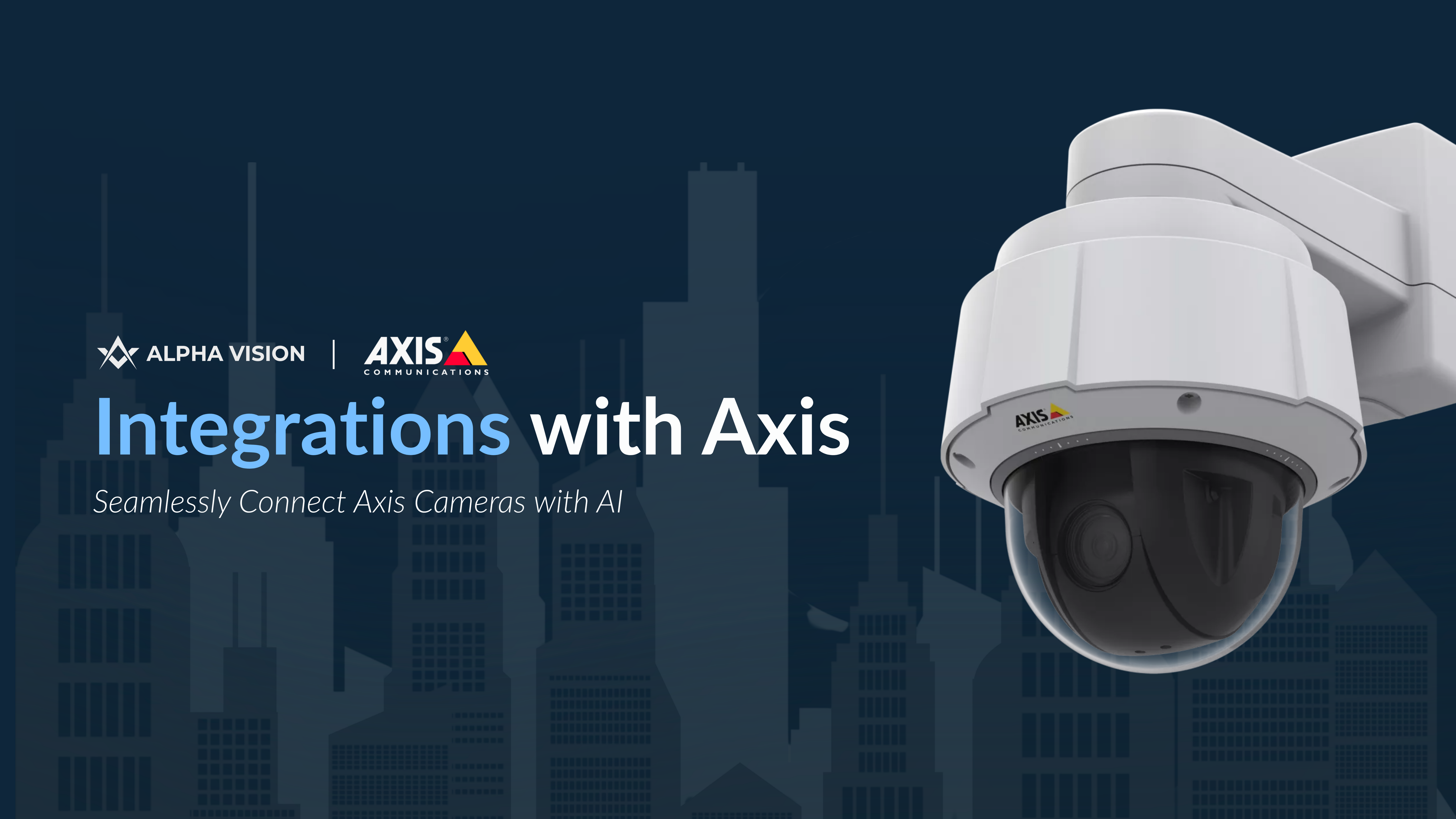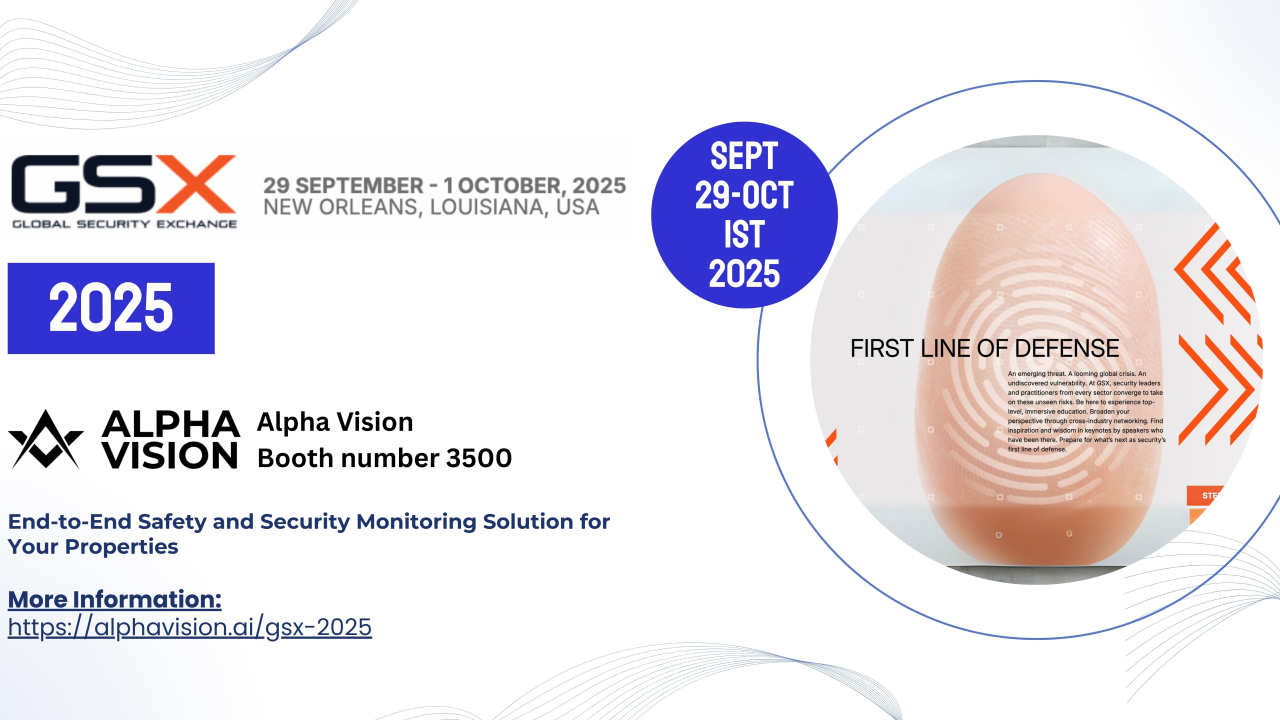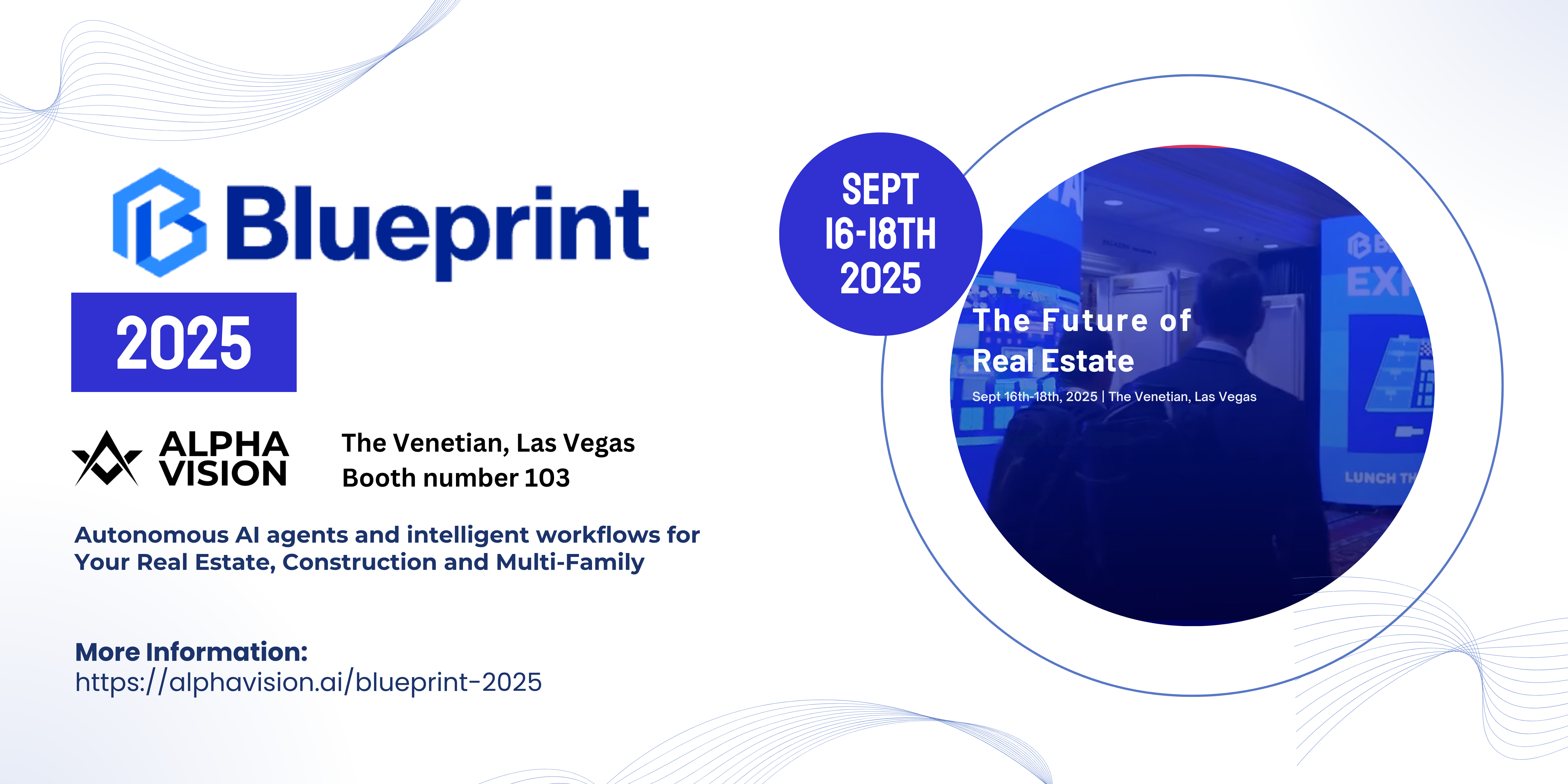In multifamily housing, ensuring tenant safety is both a top priority and a continuous challenge. Modern video security solutions are rising to meet this challenge by leveraging AI and cloud technology to proactively deter incidents. Unlike traditional CCTV that merely records, today’s systems can detect threats in real time and send instant alerts, enabling faster response and prevention. Below, we explore nine leading video security solutions recognized for enhancing safety in apartment communities and condo complexes. Each solution combines advanced video surveillance features with intelligent analytics to help property managers protect residents, monitor common areas, and swiftly address security events.

1. Alpha Vision + Axis Integration – AI-Powered Surveillance with Axis Hardware
Alpha Vision + Axis is a powerful integration that pairs Alpha Vision’s AI-driven “Physical AI” platform with Axis Communications’ industry-leading cameras. This combined solution leverages Axis’s state-of-the-art hardware with Alpha Vision’s cloud-native intelligence to deliver unparalleled security coverage. The integration provides “unmatched clarity, compliance, and real-time intelligence” by uniting Axis’s high-end imaging and Alpha Vision’s analytics. For multifamily property managers, it offers the best of both worlds: enterprise-grade camera performance and smart AI analytics in a plug-and-play system that can be deployed across single or multiple properties.
-
High-End Axis Cameras: Axis cameras are renowned for crisp video quality and coverage. They offer up to 40× optical zoom for capturing fine details from afar, and full 360° panoramic views to eliminate blind spots. The cameras’ rugged, weatherproof, and vandal-resistant design ensures reliable operation both indoors and outdoors – ideal for apartment perimeters, parking lots, and other challenging environments.
-
Alpha Vision AI Analytics: When connected to Alpha Vision’s platform, Axis cameras become active security agents. Key AI features include Magic Search for instantly finding video clips by object or behavior, Intrusion Alerts for real-time detection of unauthorized entry, License Plate Recognition (LPR) for vehicle monitoring, and an AI Inspector for automated safety and compliance checks. Routine surveillance tasks are handled by AI, so staff can focus on responding to important incidents. For example, if an unauthorized person enters a secured area, the system can flag it immediately for review.
-
Live Intervention & Deterrence: The integration supports two-way audio through network speakers, enabling security teams to talk down to trespassers or broadcast warnings remotely. This live intervention capability means incidents can be deterred or de-escalated in real time – for instance, issuing a warning to a loiterer that they are being observed. Such proactive deterrence helps stop security threats before they escalate on the property.
-
Compliance & Cloud Convenience: Alpha Vision + Axis is built for modern enterprise standards. The solution is fully TAA and NDAA compliant, meaning it’s approved for use by U.S. government agencies and security-conscious organizations. Being 100% cloud-native, it requires no on-site NVR/DVR. Deployment is as easy as installing Axis cameras pre-loaded with Alpha Vision firmware – they automatically connect to the cloud for instant setup. Software updates and new AI features roll out via the cloud, so the system is always up-to-date without manual effort.
-
Scalability & Cost Efficiency: Designed to grow with your portfolio, this integration makes it easy to expand coverage across multiple buildings or communities without heavy infrastructure investment. Adding a new site is as simple as mounting additional Axis cameras and connecting them to the Alpha Vision cloud. This cloud-managed approach reduces maintenance and IT overhead, delivering a cost-efficient solution for property groups. Whether you manage one building or dozens, a centralized cloud dashboard keeps everything streamlined.
The Alpha Vision + Axis combo is battle-tested across industries and is already used by property management firms to enhance tenant safety. For example, in multifamily complexes it can monitor lobbies, hallways, parking garages, and perimeters proactively – alerting staff to intrusions or emergencies in progress. This integration’s proven reliability and intelligence make it a standout choice for housing providers seeking a modern, proactive video security system. It delivers the top-tier imaging Axis is known for, supercharged with Alpha Vision’s AI – resulting in a smart surveillance solution that actively deters incidents and scales effortlessly with cloud management.
2. Genetec Security Center – Unified Security Management Platform
Genetec Security Center offers a comprehensive platform that unifies video surveillance, access control, and analytics in one system. Its open architecture supports hundreds of camera brands and IoT sensors, allowing apartment operators to integrate existing hardware and expand capabilities over time. This unified approach provides centralized visibility across a multifamily portfolio – from entry doors to parking areas – enabling quicker investigations and coordinated responses to incidents.
Limitations:
-
Complex Deployment: Implementation can be resource-intensive, often requiring expert configuration and IT support.
-
High Cost: Licensing and module fees, as well as scaling hardware, can be expensive for mid-sized property operations.
-
Steep Learning Curve: Unlocking advanced analytics features may demand significant staff training for effective use.
-
On-Premise Reliance: While remote access is supported, some advanced functions still rely on on-site servers and infrastructure.
3. Avigilon (Motorola Solutions) – Advanced AI Cameras & Analytics
Avigilon, part of Motorola Solutions, delivers high-end cameras and AI analytics widely used in mission-critical security environments. For multifamily applications, Avigilon’s system offers ultra-HD video quality and intelligent monitoring. Its hallmark feature, Appearance Search, lets security staff quickly locate a specific person or vehicle across hours of footage (e.g. searching for a “person in a red jacket”), dramatically reducing investigation times. Avigilon also provides built-in License Plate Recognition and integrates with access control and emergency alarm systems – enhancing situational awareness in residential complexes.
Limitations:
-
High Cost: The premium pricing of Avigilon’s proprietary cameras and software can be prohibitive for smaller-scale deployments.
-
Complex Deployment: Installation and setup often require professional integrators and IT expertise.
-
Primarily On-Premises: While a hybrid cloud mode exists, Avigilon’s solution is less cloud-native than some competitors, which may limit remote management capabilities.
-
Hardware Dependency: Many advanced features rely on using Avigilon’s own cameras and appliances, reducing flexibility with third-party hardware.
4. Avigilon Alta (formerly Ava Security) – Cloud AI Surveillance Made Simple
Avigilon Alta is Motorola’s cloud-native video surveillance platform that combines Ava Security’s AI analytics with an easy, plug-and-play design. It allows property managers to connect existing IP cameras via a cloud gateway or deploy Ava’s own cloud cameras, instantly adding AI-powered insights without the need for on-site NVRs. For multifamily housing, Avigilon Alta offers centralized web/mobile access to video feeds with AI-driven search (e.g. finding people or vehicles across footage in seconds) and operational analytics like occupancy counts – all delivered through a user-friendly cloud dashboard.
Limitations:
-
Cloud Dependence: The system requires a reliable, high-speed internet connection; outages or poor connectivity can disrupt video access and monitoring.
-
Subscription Costs: Ongoing cloud service fees can accumulate over time, potentially ending up higher in cost than a one-time on-premises system for long-term use.
-
Privacy Considerations: Storing surveillance video and data in the cloud may raise compliance or data protection concerns for some property owners.
-
Limited Offline Functionality: If internet connectivity is lost, live video and AI analytics are significantly reduced or unavailable until service is restored.
5. Verkada – Cloud Surveillance with AI Analytics
Verkada provides a cloud-managed security platform that combines security cameras, environmental sensors, access control, and alarms under a single pane of glass. Multifamily property managers appreciate Verkada for its easy deployment (cameras come online with minimal IT work) and centralized monitoring through the cloud. The system’s AI capabilities include intelligent video search and real-time alerts – for example, recognizing a known trespasser or detecting unusual motion after hours. Verkada also offers integrated deterrents like alarm sirens, door controllers, and two-way intercoms, which can help actively prevent incidents and improve response times in residential communities.
Limitations:
-
Privacy Concerns: Verkada’s use of facial recognition and license plate reading can raise privacy and compliance issues, especially in regions with strict data laws.
-
Vendor Lock-In: It uses proprietary hardware and software, which ties customers into Verkada’s ecosystem and limits integration with other systems.
-
High Ongoing Costs: Subscription fees for cloud storage and advanced analytics can strain budgets, particularly for smaller property owners or HOAs.
-
Limited Customization: Many AI features and integrations are fixed out-of-the-box; the platform offers less flexibility for custom analytics or third-party add-ons compared to open systems.
6. Rhombus Systems – Cloud Video Security with Smart Analytics
Rhombus Systems delivers a cloud-based video security platform designed for multi-site organizations. Like Verkada, it offers smart IP cameras and IoT sensors all managed through one cloud dashboard. For multifamily housing portfolios, Rhombus makes it straightforward to monitor multiple properties remotely – with features like AI-powered video search by person or vehicle, real-time intrusion alerts (e.g. detecting loitering in a lobby after hours), and even integrations that sync video with access control or IoT sensors (for instance, linking door entry events to camera footage). This unified approach helps property managers quickly investigate incidents and gather video evidence across their sites.
Limitations:
-
Cloud Dependence: Consistent high-speed internet is required; any outage can hinder access to live feeds and recordings.
-
AI Accuracy Variances: Facial recognition and object detection algorithms may produce false positives or miss events, especially in poor lighting or complex scenes.
-
Recurring Costs: Between subscription fees and necessary camera hardware, the total cost can be high for smaller operators, impacting those on tighter security budgets.
-
Privacy Concerns: Continuous video monitoring and AI analysis (even for safety) might raise privacy or compliance questions among residents or staff.
7. Eagle Eye Networks – Open Cloud VMS with AI & Integrations
Eagle Eye Networks is a global leader in pure cloud video surveillance, known for its open, camera-agnostic platform. It enables multifamily communities to connect virtually any IP camera (Axis, Hanwha, Panasonic, etc.) to the Eagle Eye Cloud VMS via a small bridge appliance, thus modernizing existing camera deployments with minimal overhaul. Security teams can then manage all video centrally in the cloud and leverage Eagle Eye’s AI features, such as natural-language video search (e.g. “person with blue shirt in Lobby 2”) for faster investigations. The system also supports useful integrations like license plate recognition for parking security and hooks into third-party analytics or access control systems, providing flexibility for customized safety setups.
Limitations:
-
Internet Dependency: The platform requires stable, high-bandwidth internet connectivity for optimal performance; poor network quality can degrade video streaming and responsiveness.
-
Ongoing Costs: Eagle Eye uses a subscription model for its cloud service and video storage, which may become expensive for budget-conscious property managers over time.
-
Hardware Bridge Required: To use existing cameras, on-site bridge devices are needed for connectivity, adding some hardware cost and complexity to deployments.
-
Integration Complexity: While open-ended, advanced custom integrations (through API or third-party tools) might require considerable IT expertise to implement and maintain.
8. Hanwha Vision (Wisenet) – AI Cameras with Edge Analytics
Hanwha Vision (formerly Samsung Techwin) produces Wisenet security cameras widely used in commercial security. Their latest camera models feature built-in edge AI chips, enabling on-camera object detection, forensic search, and even queue/occupancy monitoring without heavy server or cloud processing. For multifamily properties, this means critical analytics (like detecting people or vehicles in restricted areas) can run directly on the cameras, reducing the need for constant network bandwidth or cloud subscriptions. Many Hanwha cameras also include audio/visual deterrents – for example, integrated speakers and flashing strobe lights that can automatically trigger when an intruder is detected. Video can be stored on-premises (in-camera or on NVRs) or in hybrid cloud setups, and Hanwha’s adherence to ONVIF standards allows integration with third-party VMS platforms (useful if a property is adding these cameras to an existing system).
Limitations:
-
High Upfront Costs: Professional-grade AI cameras and NVRs from Hanwha require significant initial investment compared to some cloud-camera solutions.
-
Placement Sensitivity: The effectiveness of the analytics is limited by camera placement – blind spots or poor positioning can reduce detection accuracy.
-
Less Advanced AI: Edge analytics, while useful, are generally less sophisticated in behavioral analysis than cloud-based AI platforms, which might limit detection of complex scenarios.
-
Maintenance Overhead: Keeping the system optimized requires regular firmware updates on cameras and VMS software, which can be burdensome to manage over time.
9. Milestone Systems – Flexible VMS with AI Integration
Milestone Systems is best known for XProtect, a leading open-platform video management software (VMS) used globally. Unlike camera vendors, Milestone focuses on providing the “brains” of a surveillance operation – its software reliably records and organizes video feeds from a wide range of cameras. For multifamily security, Milestone’s flexible integrations are a key advantage: property owners can mix-and-match different camera brands and then incorporate third-party AI analytics (from Milestone’s marketplace) for capabilities like people counting, facial recognition at entrances, loitering detection, etc.. XProtect also allows custom rules and alerts (for example, flagging if someone is loitering in a stairwell after 10 PM), giving security teams fine-grained control over their monitoring policies. The system scales well from single-building deployments to large multi-site portfolios and supports hybrid storage – combining local NVRs for redundancy with cloud or central servers for unified management.
Limitations:
-
IT Resources Needed: Deploying and maintaining Milestone’s software can require strong in-house IT support or technical expertise.
-
Cost of Ownership: Licensing fees for the VMS and costs for add-on analytics plugins can add up quickly, especially for large installations.
-
Privacy Management: Using advanced features (e.g. facial recognition) necessitates careful privacy compliance and policies to address resident concerns.
-
Performance Variability: The system’s effectiveness depends on the quality of the cameras and integrations used; poor camera hardware or mismatched plugins can result in inconsistent performance.
-
Limited Out-of-Box AI: By itself, the core XProtect VMS does not include real-time AI threat detection – it relies on integrating external analytics tools to achieve proactive incident prevention.
10. Spot AI – Easy AI Surveillance for Existing Cameras
Spot AI is a newer entrant that offers a plug-and-play appliance plus cloud platform to add AI smarts to existing camera systems. Founded in 2018 in Silicon Valley, Spot AI is designed for quick deployment and ease of use. For multifamily properties that already have basic CCTV cameras installed, Spot AI’s appliance can connect to those feeds and immediately provide benefits like Google-like video search (to quickly find footage of a specific person, car, or activity) and real-time alerting on suspicious events. The system includes a user-friendly web dashboard for viewing cameras and sharing clips, and it uses a hybrid storage approach – recording video locally on the appliance for reliability while leveraging the cloud for AI processing and remote access. This means even if the internet goes down temporarily, cameras continue recording on-site, and when connectivity is restored, users can still leverage AI insights for the downtime. Overall, Spot AI helps multifamily security teams upgrade legacy camera setups with modern analytics and cloud access, without having to replace all their hardware.
Limitations:
-
Network Reliance: A stable internet connection is required to make full use of Spot AI’s cloud features; connectivity issues will limit remote access and cloud analytics.
-
AI Accuracy Factors: The accuracy of Spot AI’s detection (e.g. identifying people or vehicles) can vary depending on the quality and placement of the existing cameras it’s connected to.
-
Tuning Required: Some advanced analytics may need calibration or fine-tuning to minimize false alerts, especially when first deployed.
-
Ongoing Costs: While it repurposes existing cameras, Spot AI operates on a subscription model – monthly service fees for the cloud platform can add up for smaller property owners over time.








